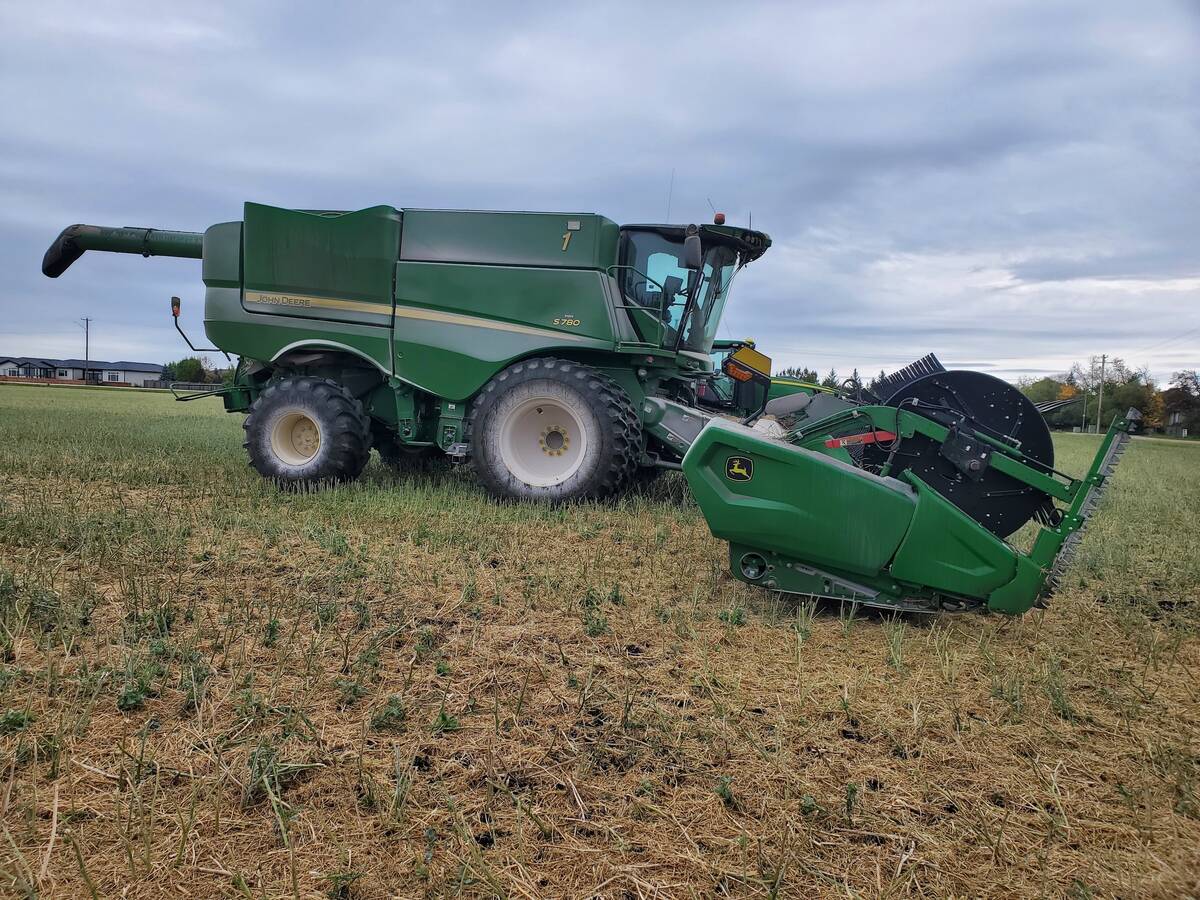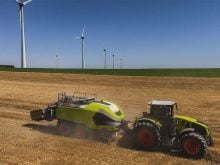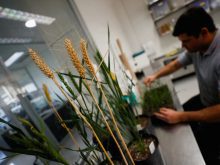To stall or not to stall? That is the question.
Canada and the United States continue to use gestational stall housing in new or renovated hog production facilities.
“As an industry it is important to consider the system you are using as a primary means of gestation and see what are the criticisms that system is undergoing and what are the advantages the system has,” said Harold Gonyou at the Saskatchewan Pork Industry Symposium Nov. 17.
The Prairie Swine Centre researcher said while the stalls are criticized for restricting animal movement, they reduce aggression, which is a problem in group-housed animals.
Read Also

Powdery mildew can be combine fire risk
Dust from powdery mildew can cause fires in combines.
All group housing results in some aggression as the hogs compete for feed or social standing in the group. The resulting scratches on animals’ shoulders, necks and sides are animal welfare concerns.
Gonyou said a significant number of sows that are regrouped are injured but these wounds are short lived. In an Australian study he found that grouped animals had more scratches that healed quickly, while abrasions in stalled animals lasted longer.
He said that a case could be made that regrouping aggression harms reproductive performance. A Prairie Swine Centre study of various electronic sow feeder systems showed animals regrouped before embryonic transfer had poorer productivity than stalled animals. However, Gonyou said that sows that were regrouped 35 days after breeding had farrow rates similar to those in stalls and had overall higher productivity.
He said the stress associated with regrouping can cause a loss of pregnancy in a small number of animals and only during a susceptible period before implantation.
“So what’s the problem here? It’s not the aggression per se, because those mixed post-implantation underwent the aggression. It’s the fact that the aggression was occurring in a particularly sensitive time in the animal’s life.”
The freedom of movement that group housing allows is important because it gives the animals more control of their environment and reduces frustration, Gonyou said.
It also improves an animal’s physical condition by allowing exercise and postural changes. The result is sows that farrow more quickly than stalled animals that get no exercise. Grouped animals also have more muscle mass and bone strength.
But freedom of movement can’t be the sole criteria, Gonyou said.
“If we did that, any group housing system would be acceptable and I don’t subscribe to the idea that all group housing systems are suitable in terms of meeting welfare expectation we have today.”
He said it comes down to how much value is put on freedom of movement versus freedom of aggression.
“That’s where we have a disagreement.”
The question hog producers face may be answered for them.
The Food Marketing Institute and National Council of Chain Restaurants established an animal welfare program in 2001 and have developed an audit system to ensure farms meet those requirements. The two groups represent American supermarkets and chain restaurants, the largest consumers of pork products.
A 2003 guideline from the groups says that a pregnant sow’s head should not have to rest on a raised feeder or have rear quarters come in contact with the back of a stall. The animal should also be able to stand up unimpeded or lie on its side without teats extending into an adjacent stall.
The guidelines are not yet imposed as a requirement for buying. However, Gonyou cautioned they are presented as a minimum temporary solution.
“They want sows to be out of stalls.”
With 80 percent of Canadian hog operations using gestational stalls, the groups realize eliminating stalls is not an option.
For the food and restaurant industries, the compromise is they will accept stalls “at least for a period of time as long as they meet the welfare criteria.”
















